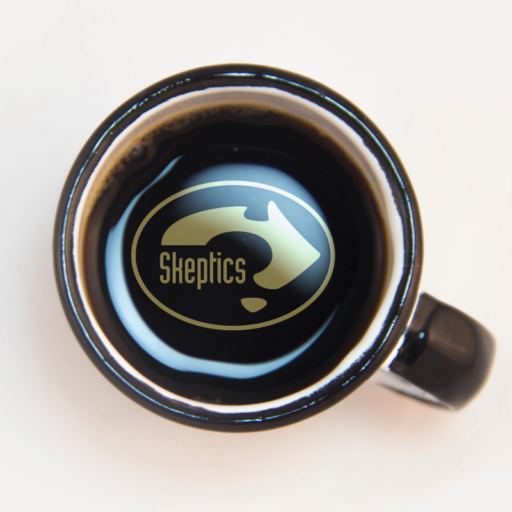Bonus Puzzles for April 2018
Seven pages of Word puzzles, anagrams, riddles, etc in pdf form.
Vic Skeptics Website April 2018 Bonus Puzzles
Enjoy!

Seven pages of Word puzzles, anagrams, riddles, etc in pdf form.
Vic Skeptics Website April 2018 Bonus Puzzles
Enjoy!
Apologies for the lateness of this posting – but I think you’ll agree – worth the wait.
From the very talented Mal Vickers: click on this link.
AUSTRALIAN SKEPTICS CONVENTION 2017 IMAGES
We’ll take this opportunity to announce (or remind you of) the early arrangements for the 2018 Convention. It will be in Sydney again, on the 13th and 14th of October.
We’ll provide you with more details and a direct link to the Convention site as they come to hand.
 Dr Varsha Pilbrow spoke at March’s Skeptics Café. Dr Pilbrow is a Lecturer in the Department of Anatomy and Neuroscience at Melbourne University.
Dr Varsha Pilbrow spoke at March’s Skeptics Café. Dr Pilbrow is a Lecturer in the Department of Anatomy and Neuroscience at Melbourne University.
She specializes in the dental morphology of the living apes, and is currently working on international research projects in the study of fossil hominids and in bioarchaeology, studying the physical anthropology of human skeletal remains from archaeological sites at the cross-roads of major human migration routes. View More 3D printing, teeth and human evolution
 Melbournians are fortunate to have access to many regular events which exist to stimulate inquiry and promote Science, Philosophy and Critical Thinking. These events are open to the public. They are mostly free.
Melbournians are fortunate to have access to many regular events which exist to stimulate inquiry and promote Science, Philosophy and Critical Thinking. These events are open to the public. They are mostly free.
Here are some of them.
ANZAAS Free Public Lectures: Monthly, with weeknight and date as advertised on the website http://www.anzaas.org.au/victoria/
ROYAL SOCIETY of VICTORIA Lecture Program: Fourth Thursday of each Month plus other events as advertised https://rsv.org.au/lecture-program/
UNIVERSITY of MELBOURNE Free Public Lectures: Several each month, weeknights, early evenings as advertised.
http://events.unimelb.edu.au/all/free-public-lecture
View More Regular Public Lectures, Workshops, etc.
Enjoy!
New for March:
Enjoy!
Our Puzzles Page has been updated. All monthly puzzles from 2016 and 2017 have been placed in a new PUZZLES ARCHIVE 7
Our Puzzles Archives go back to 2010
https://skeptics.cafe/puzzles/puzzles-archives/
New for February are:
ENJOY!
 1. More than 98 percent of convicted felons are bread eaters.
1. More than 98 percent of convicted felons are bread eaters.
2. Fully HALF of all children who grow up in bread-consuming households score below average on intelligence tests.
3. In the 18th century, when virtually all bread was baked in the home, the average life expectancy was less than 50 years; infant mortality rates were unacceptably high; many women died in childbirth; and diseases such as typhoid, yellow fever and influenza ravaged whole nations.
4. More than 90 percent of violent crimes are committed within 24 hours of eating bread. View More The Case Against Bread

When naturalists started examining the Earth in the 18th century for evidence of its age, they were to a large extent seeking to confirm the suggestion of the Bible that the Earth was several thousand years old; but the closer they looked, the less certain they were that this was the correct answer.
Geologists examined the rocks across Britain, and noted that the same sequence of rocks occurred in different places, suggesting that the rocks had a common source. They also noticed that different levels of rocks contained different groups of fossils, including fossils of animals different from those of today, and not mentioned in the Bible. Yet the fossils were in similar orders in different locations. Rocks were also classified according to how they were made, and by the order in which they’d been created. In the first case, rocks were classified as sedimentary, igneous or metamorphic. Sedimentary rocks are rocks created by grains of mud or sand laid down over the years on lake or sea floors, and compressed into rock by the weight of material lying above them. Igneous rocks are rocks of volcanic origin. Some are from lava which has cooled solid on the surface of the Earth (such as basalt), while others have cooled while still inside the Earth (such as granite), and emerged after they’d solidified. Metamorphic rocks are rocks (usually sedimentary) which have been altered by heat or pressure (such as limestone being converted to marble). View More A Skeptic’s Guide to the Age of the Earth
AUSTRALIAN SKEPTICS CONVENTION 2017 IMAGES
Photography by Mal Vickers